lordroel
Administrator
Posts: 68,061 
Likes: 49,462
|
Post by lordroel on Dec 26, 2020 8:01:08 GMT
Day 515 of the Great War, December 26th 1915Western FrontGerman artillery fire and probing attacks cause concerns in France that a German offensive will soon be launched. Middle Eastern theatre: Britain makes a new Arab friendAbdulaziz ibn Saud is the emir of Nejd, a territory on the eastern side of the Arabian peninsula. Much of his power derives from his family’s long alliance with followers of Wahhabism, a particularly austere Islamic sect. Today Ibn Saud meets with representatives of the British government on the Persian Gulf island of Darin. He signs a treaty agreeing to accept the protection of the British and their support in his ongoing struggle with the Rashidi family. The Rashidi have accepted the suzereinty of the Ottoman Empire. Ibn Saud hopes that the support of his British friends will even the odds against his enemies. British goals in the treaty are as much to contain Ibn Saud’s ambitions as to send him to war against Turkish clients. The treaty obliges Ibn Saud to respect the independence of Britain’s other Arab allies: Qatar, Kuwait and the Trucial Coast emirates. Britain may however be drifting into mutually incompatible obligations in the Middle East. British officials are also in discussions with Sharif Hussein bin Ali, ruler of the Hejaz (the western Arabian region in which Mecca and Medina lie). The British want Hussein to lead an Arab revolt against the Turks that will set the Middle East alight, implicitly offering to make him the ruler of a vast state stretching from Syria to the Hejaz. Britain’s treaty with Ibn Saud does not oblige him to leave the Hejaz alone. This could be an unfortunate oversight, given Ibn Saud’s ambition to dominate the entire Arabian peninsula. Naval operations: MIMI and TOUTOU Capture German Ship on Lake TanganyikaAfter their months-long voyage from South Africa, the MIMI and TOUTOU finally reached Lake Tanganyika in late October. They were prepared there and finally launched into the late on December 22 and 23. Christmas saw a test cruise of each boat. Celebration of the holiday was limited; in fact, Spicer-Simson, upon seeing one of his sailor’s huts decorated for Christmas, berated him: “What’s this? A whorehouse? Take all that down and burn it.” The next morning, Spicer-Simson recieved a report from the Belgians that a German ship, the KINGANI, was approaching their position. Unperturbed, he continued with the traditional Sunday service until the German ship could be seen by eye. The MIMI and TOUTOU were hastily launched into the lake, and in fact surprised the Germans somewhat, who were busy carefully inspecting the shore. The KINGANI had a heavier gun (a six-pounder) with a larger range than the British three-pounders, but it could only fire forward. The British ships were thus largely able to maneuver out of its firing arc. However, the British guns’ range was so limited that firing on the Germans exposed them to machine-gun fire. Nevertheless, around noon, after a few minutes of the short-range fight, a large explosion rocked the KINGANI and she struck her colors. Many of those on the expedition were not regular Navy men; this included the helmsman of the MIMI, a veteran of Ypres, who now decided to aim his ship directly for the KINGANI. He rammed her at some speed, doing considerable damage to both ships, though both were eventually repaired. The eleven German survivors (three European and eight African) were captured, and revealed that the Germans had had no idea the British had any ships on the lake. They had heard rumors of Spicer-Simson’s expedition, but had completely dismissed them as tall tales. Photo: The German ship KINGANI, pictured before her capture Naval operations: Celtic Sea Naval operations: Celtic SeaRudolf Schneider, commanding U-24, captures and sinks British freighter SS COTTINGHAM, 513 tons, travelling in ballast from Rouen to Swansea. He then sinks Belgian freighter SS MINISTRE BEERNAERT, 4,215 tons, bound from Newport, Wales to Buenos Aires with a load of coal. Both attacks take place near Lundy Island at the mouth of the Bristol Channel. Schneider's score is now 25 ships and 83,158 tons. Naval operations: North Sea:British submarine HMS E-6, 725 tons, and navy trawler RESONO, 230 tons, both run into mines laid by Herbert Pustkuchen in UC-5 near the Sunk light vessel off Harwich. This brings Pustkuchen's score to 19 ships and 22,764 tons. Photo: submarine HMS E-6 German surface raider SMS MOVE makes first sortie from Bremen. Photo: German auxiliary cruiser SMS MOVE 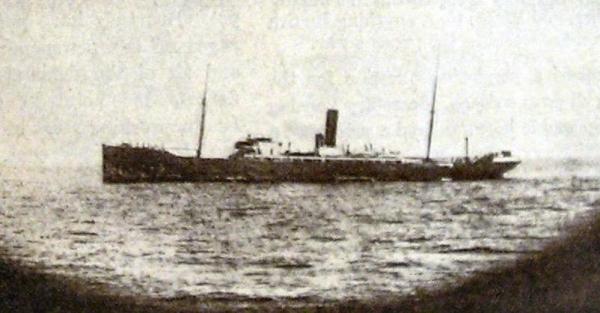
|
|
lordroel
Administrator
Posts: 68,061 
Likes: 49,462
|
Post by lordroel on Dec 27, 2020 8:15:26 GMT
Day 516 of the Great War, December 27th 1915
Eastern Front: Abortive Russian Offensive in Galicia
The Russian Seventh Army, formed for the general purpose of threatening Bulgaria by an amphibious landing that would never happen, had been moved back to the front lines with Austria in mid-November. Alexeyev hoped an offensive in eastern Galicia, near the Romanian border, would easily break through the weakened Austrians. Ivanov, commanding the Southwest Front, was less sanguine, delaying the offensive for as long as he could and ordering excessive amounts of supplies for it.
After the shell crisis of the previous spring and summer, shell reserves were now up to a point where the Russians assumed they could easily destroy the enemy front lines and make a quick breakthrough. However, they soon ran into many of the problems the Western Allies had dealt with earlier in the year. Even when they could take the enemy trenches, the Austrian guns continued to pound them and friendly reserves were too far off. The Seventh Army and its commander were unfamiliar with the area, causing troops to occasionally get lost. The Russians concentrated their shells and assaults in very narrow stretches of the front, so what breakthroughs were made were quickly enfiladed from both sides. One soldier recalled:
After artillery preparation, we went about a mile forward under heavy enemy gunfire. Once we were within five hundred yards, we were hit, suddenly, by devastating machine-gun and rifle-fire that had hitherto been silent. There was the enemy, in solid trenches with great parapets and dug-outs; sitting behind ten or fifteen rows of uncut wire, waiting for us. We lay on the frozen ground, for hours, as the snow drifted down; if we were wounded, there was no help because we were too close to the wire. But behind us, there were artillery colonels and captains of the General Staff, drinking rum tea, and writing the reports–‘After brilliant artillery preparation our glorious forces rushed forward to occupy the enemy trenches, but were held up by counter-attack of strong reserves.’
Macedonia Front
French occupy Castellorizzo, near Rhodes. Greek protest.
French General de Castelnau declares that Allied defenses at Thessalonica, Greece is now impregnable.
Naval operations: North Sea:
British freighter SS HADLEY, 1,777 tons, bound from Newcastle to London with a load of coal, hits a mine laid by Erwin Waßner in UC-3. This brings his score to 12 ships and 15,282 tons.
Dutch trawler Erin, 164 tons, is sunk by a mine.
|
|
lordroel
Administrator
Posts: 68,061 
Likes: 49,462
|
Post by lordroel on Dec 28, 2020 3:48:14 GMT
Day 517 of the Great War, December 28th 1915
Western Front
French carry trenches in the Vosges.
Artillery activity on whole front.
Departure of Indian Corps for another front.
Eastern Front
Germans routed by Lettish detachments on Aa river (Courland).
Gallipoli campaign
Allied commanders agree to evacuate Cape Helles on Gallipoli, which would end the battle.
United States: Colonel House Dispatched to Europe for Negotiations
Henry Ford’s “Peace Ship” OSCAR II had proven to be an unwanted embarrassment. Henry Ford had left the expedition in Kristiania [Oslo] in the middle of the night, before the ship continued on to Sweden. Even before its arrival there, 4000 pounds of rubber, determined to be bound for Germany, were discovered as part of its mail delivery, and were seized by the British as contraband when they inspected the ship earlier in the month. This discovery, made public on December 28, made the Allies even more circumspect as to the Peace Ship’s aims.
The Wilson administration had made sure to give no official or unofficial sanction to Ford’s quixotic endeavor, and in fact had repeatedly urged him to call it off. Its spectacular failure could only hurt Wilson’s own attempt to broker peace in the form of his trusted advisor, Colonel House, who he dispatched a second time to Europe on December 28. He was bound for London at first, to meet with Foreign Minister Grey. House’s role as irreplaceable counselor had begun to diminish somewhat since the President’s remarriage, and would from this point forward slowly start to deteriorate; it seems that House would not represent Wilson entirely faithfully in his diplomatic work.
Naval operations: Battle of Durazzo
The Serbian army has retreated into Albania to escape destruction at the hands of the German, Bulgarian and Austro-Hungarian invaders of their country. Many of the Serbian soldiers and the civilians fleeing with them have died crossing the Albanian mountains, mostly from exposure and the effects of hunger but some at the hands of Albanian raiders; many Albanians are less than pleased at the Serbs bringing the war into their country.
The Serbs are making their way to the coast, where they hope to be brought to safety by Allied ships. To interfere with this evacuation an Austro-Hungarian naval force headed by the new light cruiser (nine 4-inch main guns)SMS HELGOLAND sails down into the Adriatic to attack the Albanian port of Durazzo, now under Italian occupation (and renamed from the Albanian Durrës). On their way they spot and sink a French submarine. Then they bombard Durazzo and sunk some Greek ships that may have been planning to assist the Serbs. Then their luck runs out as they blunder into a minefield. One Austro-Hungarian ships is sunk, another, the TRIGLAV severely damaged.
The Austro-Hungarians now decide that discretion is the better part of valour and begin to retreat back to base, towing the crippled Triglav. But there is danger ahead for the slow-moving flotilla. British, French and Italian ships are converging, intent on destroying the Austro-Hungarian squadron. They race northwards hoping to catch the enemy ships before they reach safety.
Naval operations: Celtic Sea
Rudolf Schneider, commanding U-24, damages British freighter SS HURONIAN, 8,755 tons, bound from Galveston to Liverpool with a general cargo; and sinks tanker El ZORRO, 5,989 tons, carrying oil from Port Arthur to Dartsmouth. At the end of his sixth war patrol his score is 26 ships and 89,147 tons.
Naval operations: Portugal
Portuguese schooner SV SEIXAS, 1,118 tons, travelling from New Orleans to Lisbon, is wrecked off Peniche, Portugal.
|
|
lordroel
Administrator
Posts: 68,061 
Likes: 49,462
|
Post by lordroel on Dec 29, 2020 3:46:20 GMT
Day 518 of the Great War, December 29th 1915Western Front: Haig & Joffre Plan Somme OffensiveOne of the many reasons Sir John French had been sacked from his command of the British Expeditionary Force on the continent was his poor relations with his French allies. It was sincerely hoped in both London and Paris that his successor, Douglas Haig, would improve inter-Allied cooperation. The first test of this came on December 29, the first meeting of Joffre and Haig in their roles as commanders of their respective armies on the continent. Joffre proposed a series of repeated attacks by both the British and French in the center of the German lines, hoping to wear down the Germans by attrition with their superior numbers. Haig thought this would lead to a needless waste of life, and proposed a British offensive in Flanders in conjunction with French attacks elsewhere–similar in conception to the failed Allied attacks in September. Joffre in turn proposed that the British should extend their lines south to the Somme, where they could perform coordinated attacks: the British to the north and the French to the south. Haig was skeptical as to the prospects of a Somme offensive, thinking the ground was less favorable than in Flanders–and even if a breakthrough should be achieved, it would likely do little but let the Germans shorten their lines by withdrawing to the north. Nevertheless, with strong pressure from London to cooperate with Joffre, Haig agreed to an offensive by 65 divisions across a front of 60 miles early in the summer. Photo: General Joffre pays a visit to Sir Douglas Haig. Haig and Joffre, Western Front, during the war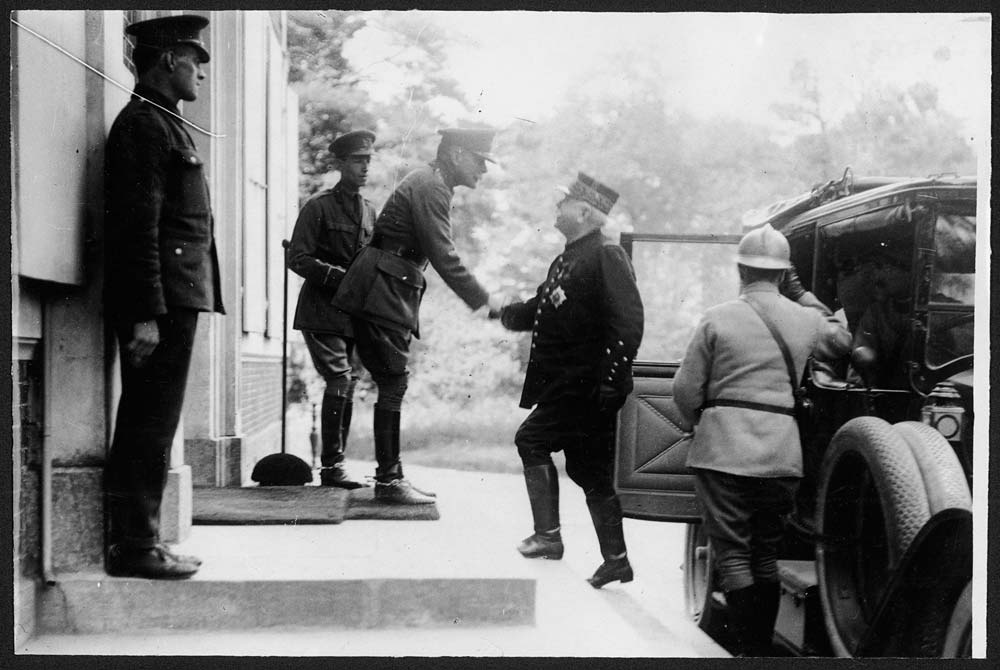 Naval operations: Battle of Durazzo Naval operations: Battle of Durazzo Austro-Hungarian ships have sailed out to attack the Italian-occupied port of Durazzo in Albania. However they managed to sail into a minefield and now they are slowly making their way back northwards, towing the stricken TRIGLAV. They hope to return to base before being caught by pursuing ships of the British, French and Italian navies. French ships are the first to catch up with the Austro-Hungarians. The TRIGLAV is abandoned to its fate and scuttled. British ships engage the others at long range but the Austro-Hungarians manage to make it to safety, though not without suffering damage. The Austro-Hungarians have learned the hard way that they run great risks when they send their ships out into the Adriatic. Naval operations: Mediterranean Sea Claus Rücker, commanding U-34, sinks Japanese freighter KENKOKU MARU, 3,217 tons, bound from Cebu to Savona with an unspecified cargo. His score is now 17 ships and 52,648 tons.
|
|
lordroel
Administrator
Posts: 68,061 
Likes: 49,462
|
Post by lordroel on Dec 30, 2020 9:54:03 GMT
Day 519 of the Great War, December 30th 1915Western FrontFive German mines explode north of Loos, causing some British casualties. Eastern Front: Falkenhayn plans ArmageddonEarlier this month Allied military leaders met at Chantilly to work out a common strategy for the coming year. They agreed simultaneous offensives next summer in the hope of overwhelming Germany and Austria-Hungary. But what of their enemies? Germany and Austria-Hungary are now developing their own plans for next year but due to a breakdown in communication between Falkenhayn & Conrad, the two countries’ army commanders, they are preparing strategies in isolation. Conrad is planning a counter-offensive against the Italians, which he hopes will knock them out of the war. Falkenhayn is planning an assault on the French. He has outlined his thinking in a memorandum to the Kaiser. He sees Britain as Germany’s main enemy in the war; indeed, he sees the war as resulting from a plot by the British to destroy Germany. The war will only end when the British realise that they cannot defeat Germany. But how to make them realise this? British naval superiority means that Britain itself cannot be directly attacked. Falkenhayn also argues against attacking British forces on the Western Front, as the terrain in the positions they defend is unsuitable (he may be remembering his unsuccessful assaults on the British at the Battle of Ypres). As far as Falkenhayn is concerned, the way to defeat Britain is to knock her allies out of the war; they are the tools of Britain’s anti-German policy. Falkenhayn considers an attack on the Italians to be a waste of time, as they are too marginal to the Allied war effort. Russia is vulnerable but the lesson of this year is that she always has space to retreat into and can always find more men to replace those lost in battles. In any case, he predicts that Russia’s internal problems could soon force her out of the war without further German military action. That leaves France, described by Falkenhayn as “England’s best sword”. He proposes an offensive against France that will knock her out of the war, not by the kind of Napoleonic war of manoeuvre attempted in 1914 but by inflicting unsustainable casualties. He proposes to attack a prestige target that the French will throw in every man to defend; superior German artillery can then be brought to bear so that, in Falkenhayn’s words, “the forces of France will bleed to death”. With the French defeated, the British will hopefully realise that they cannot defeat Germany and agree to peace. Falkenhayn proposes the fortified town of Verdun as the target for his offensive. The Kaiser agrees. The local commander of the offensive will the Kaiser’s son, the Crown Prince Wilhelm of Prussia, guided by his chief of staff, General Schmidt von Knobelsdorf (unlike the Crown Prince, Knobelsdorf is a professional soldier). Detailed planning begins, but under the greatest secrecy as the element of surprise is to be maximised. The assault will begin in mid February. Air operations: First Zeppelin Raid on SalonikaWith the defeat of Serbia, the British and French forces that had attempted to help them had mostly withdrawn back to Salonika and entrenched themselves around the city. The Germans were unwilling to commit any resources to defeating them, and had moved most of their troops in the Balkans back to the Western Front. Besides, a land attack on Salonika came with the possibility of forcing Greece into the Allied camp, further stretching German resources. Nevertheless, such a large Allied force could not go entirely unharassed, and on December 30 a German Zeppelin attacked the Allies there. The attack only inflicted minor damage and casualties, but one of these was a Greek shepherd. Greece, however, did not protest to Berlin at the killing of one of its own civilians on its own soil. On the same day, General Sarrail, commanding the forces at Salonika, arrested and exported the consular staff of the Central Powers in the (officially neutral) city. This added violation of Greek neutrality brought only limited additional protest. Naval operations: Mediterranean Sea Max Valentiner in U-38, British freighter SS CLAN MACFARLANE, 4,823 tons, carrying a general cargo from Liverpool to Bombay. SS PERSIA is also torpedoed by U-38 off Crete, resulting in the deaths of 343 people, including U.S.A. Consul at Aden. Because the captain of U-38, Max Valentiner torpedoed the ship without warning, breaking both the Rules of Prize Warfare and The Arabic Pledge, Germany's own restriction on attacking passenger ships, the Allies will declare him a war criminal. Claus Rücker, commanding U-34, sinks British freighter MV ABELIA, 3,650 tons, bound from Bombay to Hull with a load of manganese ore and cottonseed. He now has 18 ships and 56,298 tons to his credit. Postcard: Postcard of SS PERSIA at Aden, c.1900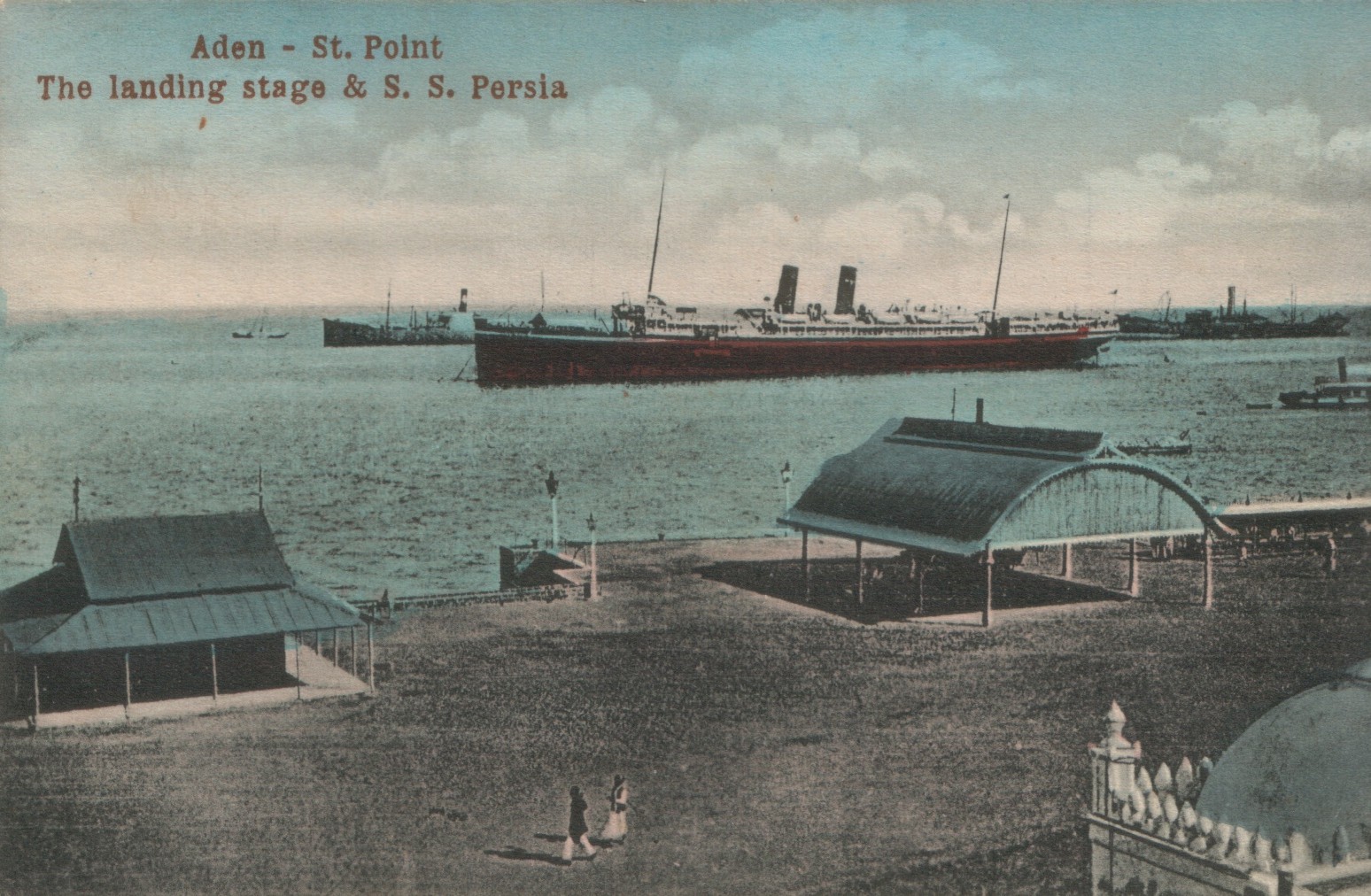 Naval operations: North Sea Naval operations: North Sea Dutch freighter SS ELLEWOUTSDIJK , 2,229 tons, travelling in ballast from Rotterdam to Portland, Maine, hits a mine laid by Alfred Nitsche in UC-10. Armoured cruiser HMS NATAL, 10,850 tons, suffers an internal explosion while moored at Cromarty Firth. Original estimates place the losses at 390, but a later revision makes it 421, including women and children visiting that day. Rumors run wild, with people suggesting sabotage and u-boats. The official inquiry states the most likely explanation as bad cordite spontaneously igniting. Photo: The upturned hull of NATAL in Cromarty Firth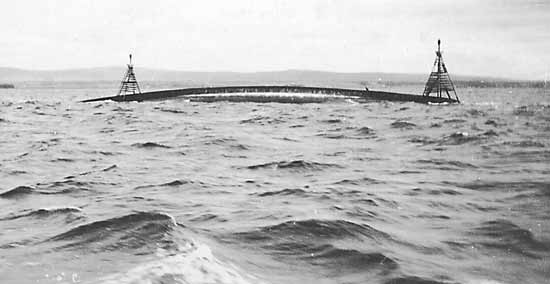 Naval operations: Adriatic Sea Naval operations: Adriatic Sea French Submarine MONGE is rammed by Austro-Hungarian destroyer HELGOLAND, and then shelled by cruiser BALATON Balaton off Durrës (Durazzo to the Italians). The submarine is then scuttled by her captain. Photo: French submarine MONGE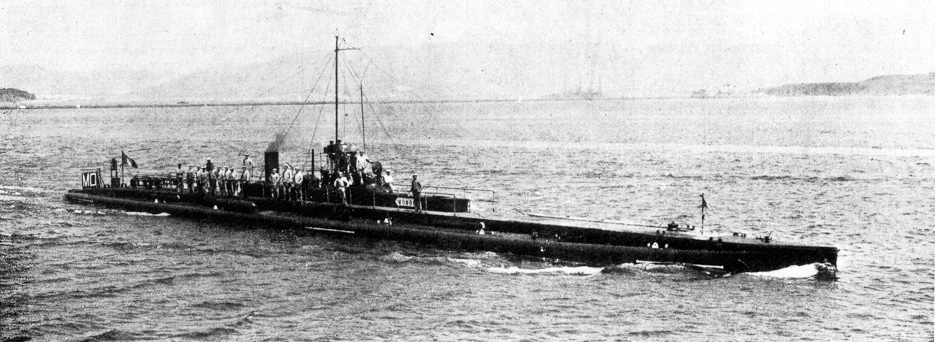 Naval operations: German East Africa Naval operations: German East Africa Monitor HMS SEVERN is patrolling the mouth of the Rufiji River when the lookouts spot a dugout canoe. The native occupant tells Severn's officers of his escape from his German captors with another native. They managed to break their chains and run, but the other man was killed. He took the canoe and was trying to reach Mafia Island, and that he has information vital to the British. His information turns out to be worthless.
|
|
lordroel
Administrator
Posts: 68,061 
Likes: 49,462
|
Post by lordroel on Dec 31, 2020 7:47:11 GMT
Day 520 of the Great War, December 31st 1915
YouTube (Preparing for 1916 - The Year of Battles)
Western Front
German attack on the Hirzstein (Vosges) repulsed.
Small German success north-west of Hulluch.
Eastern Front
The Russians attack Austro-Hungarian positions on the Styr River in Galicia, incurring heavy casualties.
Naval operations: North Sea
His Majesty's Trawler SPEETON, 205 tons, runs on a mine laid by Georg Haag in UC-7. His score is now 4 ships and 4,668 tons.
|
|
lordroel
Administrator
Posts: 68,061 
Likes: 49,462
|
Post by lordroel on Jan 1, 2021 8:21:25 GMT
Day 521 of the Great War, January 1st 1916
Eastern Front
Russian Offensive on the Strypa and the Styr (Galicia).
Macedonia Front
King Peter of Serbia reaches Salonika.
Kamerun Campaign: British Capture Capital of German Kamerun
For the last two months, British and French forces had been slowly closing in on the remaining Germans in southern Cameroon. The German forces there still had an avenue of escape to Río Muni, a neutral Spanish colony (now part of Equatorial Guinea). After this route was threatened by the French advance, on December 28 the German commander Zimmermann ordered a retreat in that direction before it became too late. He chose not to put up a fight for the capital, Jaunde, as he was short on ammunition and did not wish the city destroyed in case Germany could recover Cameroon after a victory in Europe. The British entered Yaounde on January 1. One officer wrote:
We found nothing in this deserted place either to eat, to drink, or to play with, and by way of adding insult to injury they left it in an unsanitary condition, dangerous to the health of our troops.
Apparently, German askaris defecated in many of the buildings in Jaunde before leaving, perhaps having been encouraged to do so by their officers.
The British were slow to pursue, and by mid-February 15,000 people (1000 Germans, and 6000 mostly Beti askaris, along with their families) had crossed into Río Muni where they were interned. Outnumbering the local Spanish troops by an order of magnitude, they spent much of the rest of the war preparing for a return to Cameroon that, at least for the Germans, would never come.
Aerial operations: Bigger and Bigger
The RFC has continued to expand to meet the needs of the new armies primarily on the Western Front. At the beginning of 1915, the RFC consisted of 2559 personnel of whom 223 were officers. Now it has 16229 personnel including 1341 officers.
The RFC now has a total of 31 Squadrons, 18 of which are serving on the Western Front one in Egypt (30 Squadron), and one on its way to Africa (26 Squadron). The remainder are undergoing combat training.
Naval operations: Mediterranean Sea
Claus Rücker, commanding U-34, sinks British freighter SS GLENYLE, 9,395 tons, bound from Vladivostok and Bombay to Genoa and London with a load of cotton. His score is now 19 ships and 65,693 tons.
|
|
lordroel
Administrator
Posts: 68,061 
Likes: 49,462
|
Post by lordroel on Jan 2, 2021 8:13:35 GMT
Day 522 of the Great War, January 2nd 1916Western FrontBombardment of Hartmannsweilerkopf (Alsace). Eastern Front: Battle of Bukovina Quickly overwhelmed in Russia’s initial invasion of Hapsburg territory, the heart of Bukovina was recaptured, lost again, and retaken once more in a series of Austrian offensives from January to March. Now the southern end of the 500-mile long Eastern Front rests on a line of hills known as the Berdo Horodyszcze along the east bank of the Strypa between the Pruth and Dniester rivers. Overlooking Czernowitz, the capital of Bukovina province, these heights have been the objective of two Russian armies in the attack since December 23rd, with a fifty hour-long preparatory bombardment beginning the fight in earnest on the day after Christmas. These attacks have focused on the towns of Toporowce and Bojan, but the assaults have been as futile as they have been relentless. This ferocious, if forgotten, battle pits the Russian VII, IX, and XI armies against the Austrian 7th Army and the German Südarmee, with the Central Powers winning a clear victory despite Russian propagandists with glowing claims of success. Yesterday, six Russian regiments ‘won’ a space about seventy-five acres in size around the former village of Rarancze in an attempt to break through to Czernowitz; today, the attack resumes at great cost in blood without taking any new ground. Photo: An Austrian sniper uses a telescopic sight in trench fighting near Czernowitz United Kingdom: How the mighty have fallen: Churchill goes to the Front United Kingdom: How the mighty have fallen: Churchill goes to the FrontA year ago Winston Churchill was the British minister in charge of the navy. He was one of the leading advocates of the Gallipoli campaign; its failure saw him demoted to a more junior cabinet role. Late November he resigned from the cabinet, in frustration at his exclusion from discussions of military strategy. After leaving cabinet, Churchill joined the army as an officer, hoping to be appointed a brigadier-general. However his political opponents did not want him to receive such a prominent position and it would have been problematic to promote him ahead of more deserving army officers. He is instead given the rank of lieutenant-colonel and given a battalion of the Royal Scots Fusiliers to command. The former minister will be a frontline commander. Canada: Canadian Prime Minister Robert Borden Calls for VolunteersAlone of the combatants, Britain and its Dominions still had entirely volunteer armies. Some soldiers and politicians, however, worried whether voluntary enlistment would be enough to provide sufficient soldiers for the “big push” in 1916, let alone to maintain the strength of units at the front. In January 1916 there were 2,675,149 British soldiers under arms, all of them volunteers. For Britain. with its old tradition of a tiny volunteer army, it was a staggering amount. It was bolstered further by contributions from its Dominions and colonies. Canada provided 150,000 volunteers since the beginning of the war, some of the first imperial soldiers to arrive in France. Four divisions constituted the Canadian Expeditionary Force on the Western Front, which had seen pitched battle in April 1915 at Ypres. Sir Robert Borden, the Canadian Prime Minister, visited Britain that year and gained an idea of the increasing magnitude of the task at hand. In his New Year’s message to his countrymen, he called for an additional 500,000 volunteers out of a population of eight million. Volunteer numbers in Canada were very uneven between the English Canadian population and the French Canadian population, some of whom opposed the war. Among English Canadians, there were some stirring for a draft. In England, calls for a draft, which would provide another two million soldiers, were also becoming strident, and a Conscription Bill would be introduced to the House of Commons that week. Aerial operations: Losses MountThroughout 1915 RFC losses have climbed steadily. During the year a total of 133 aircraft were lost with 49 of these lost in the last quarter of the year. 53 aircrew have been killed and a further 139 wounded, with 19 and 70 of these respectively in the last quarter. A further 81 have been taken prisoner with 27 in the last quarter. Naval operations: Allied Submarine Campaign Against Turkey EndsAlthough the Allied surface fleet had never made it through the Dardanelles, Allied submarines had, wreaking significant havoc within the Sea of Marmara. Over the course of the past few months, Allied submarines had sunk half of the Turkish merchant fleet, upon which Turkey was entirely dependent for trade between her European and Asian portions. Supplies could not reliably make it from Asia to Europe, nor German ammunition from Europe to Asia; Turkey’s surface fleet was essentially grounded due to lack of coal. However, with the Dardanelles and Gallipoli campaigns coming to a close, the submarine operations were no longer deemed essential. On January 2, the last British submarine there, E2, exited the Dardanelles, ending the active naval campaign.
|
|
lordroel
Administrator
Posts: 68,061 
Likes: 49,462
|
Post by lordroel on Jan 3, 2021 8:11:26 GMT
Day 523 of the Great War, January 3rd 1916
Western Front
In Artois, Germany detonates a mine below French lines, allowing them to capture the stretch of trenches.
Eastern Front
Development of Russian offensive in Bukovina and eastern Galicia and Poland.
Naval operations: Aegean Sea
Rudolf Singule, commanding Austrian U-4, takes Albanian sailing vessel HALIL as a prize. Two other vessels are sunk in this action.
Naval operations: America and Japan Respond to Mediterranean U-Boat Threat
The Germans had ended their submarine campaign in the Atlantic due to American pressure, but continued the domestically popular effort in the Mediterranean, where it was hoped fewer American vessels and citizens would be found. This was dashed in November, when the ANCONA was sunk with the loss of many American citizens. The submarine in question, U-38, was operating under the Austrian flag, so American diplomatic efforts were directed at Vienna instead, and by late December Austria had agreed to all of America’s diplomatic demands.
However, essentially simultaneously with Austria’s reply, U-38 sunk another liner, the PERSIA, on December 30, off the Cretan coast. 343 of the 519 on board were killed, including the model for the Rolls Royce hood ornament, Eleanor Thornton. Only two of the dead were Americans, but one of them was the American consul to Aden. In her cargo were a large number of gems belonging to the Maharaja of Kapurthala. In order to deal with this new submarine crisis, Wilson cut short his honeymoon in Hot Springs, Virginia on January 3, and returned to Washington.
Another country recently threatend by the German submarine action in the Mediterranean was Japan, who lost the passenger liner YASAKA MARU on December 21 and the freighter KANKOKU MARU on December 29. In response, on January 3, Japan announced it would send a squadron of warships to Suez to address the threat. This was the first Japanese naval deployment outside of Asia during the war.
|
|
lordroel
Administrator
Posts: 68,061 
Likes: 49,462
|
Post by lordroel on Jan 4, 2021 3:45:30 GMT
Day 524 of the Great War, January 4th 1916
Eastern Front
Russian counterattack forces Austro-Hungarian troops to retreat from Czernowitz (Chernivtsi), Bukowina.
Western Front: Untappable “Fullerphone” Ordered for British Army
With the lines on the Western Front largely static, both sides had plenty of time to devise whatever tactical advantages they could. One of these was the tapping of telegraph lines, which the Germans did extensively throughout 1915. Many British telegraph lines operated on alternating current and were sent to ground, allowing German equipment, occasionally as far away as the other side of no-man’s-land, to pick up the signal using induction.
By October 1915, Captain A.C. Fuller believed he had a solution to this problem; by using a DC current with a return line, the Germans would be unable to pick up their telegraph signals by induction. Even tapping into the line directly was rather difficult due to filtering. Deployment was relatively easy, as they could largely be incorporated into existing telephone lines. The October test near Ypres went successfully, and on January 4 the Army placed its first order for these new “Fullerphone” sets. Over 15,000 such handmade Fullerphones would be in use by the British and American armies by the end of the war.
Italian front
Artillery duel in southern Tyrol.
Mesopotamia campaign: Siege of Kut
General Aylmer moves from Ali Gherbi to relieve Kut.
Aerial operations: A new hope
In their efforts to solve the problem of firing forward, British pilots have been provided with a succession of pusher aircraft in the hope of offsetting some of the advantage held by the Fokker monoplanes.
However, it appears that a solution is in sight as both the RFC and RNAS have now placed orders for synchronisation gears.
It typical fashion the two services have not cooperated on the issue and have ordered separate designs. The RFC placed orders for the Vickers-Challenger gear in December 1915, and now the RNAS has placed an order for the Scarff-Dibovski gear. Both gears will be fitted to the production versions of the new Sopwith 1½ Strutters once the current flight testing is complete.
It’s likely that the RNAS will get theirs first as the entire Sopwith production line is contracted to the Navy and the War Office will have to find other contractors to build their aircraft. Regardless it will be a few months before the new weapon is available.
Naval operations: North Sea
Dutch freighter SS LETO, 3,225 tons, carrying a load of wheat from New York to Rotterdam, strikes a mine laid by Alfred Nitzsche in UC-10. Nitzsche's score is now 2 ships and 5,454 tons.
Naval operations: Mediterranean Sea
Claus Rücker, commanding U-34, ends his fifth war patrol with the capture and scuttling of British freighter SS COQUET, 4,396 tons, bound from Torrevieja to Rangoon with a load of salt. His score is now 20 ships and 70,089 tons.
PERESVET was a lead-class Imperial Russian pre-dreadnought battleship with a complex, unlucky history. In 1903 she had been one of the ships based at Port Arthur, Russia’s Pacific Base on China’s Liadong Peninsula. In 1904, Russian and Imperial Japan went to war over rights to territory in China, and the Japanese beseiged Port Arthur. PERESVET took part in a number of battles in which the Japanese gained the upper hand, and in January 1905 the Russians surrendered the base. Before handing over control, the scuttled PERESVET, sending her to the bottom of the bay. The Japanese, however, resurfaced the ship and commissioned it as SAGAMI after the war. When the two nations found themselves as allies in World War I, Japan sold Russia back its own ship. Unfortunately for PERESVET, her bad luck was not over. Steaming back to Russia all the way from the Pacific, she struck a mine half-way off Port Said and sank with the loss of 167 men.
|
|
lordroel
Administrator
Posts: 68,061 
Likes: 49,462
|
Post by lordroel on Jan 5, 2021 3:46:05 GMT
Day 525 of the Great War, January 5th 1916Serbian campaign: Montenegrin campaign - Austria begins to settle accounts with MontenegroAfter victory over Serbia the Austro-Hungarians now turn their attention to Montenegro. The small mountain kingdom had entered the war on Serbia’s side and is continuing to resist. Austria-Hungary’s Conrad is determined to crush this Slavic nation and then press on to attack Italian-occupied ports in Albania. Today his invasion of Montenegro begins, with Austro-Hungarian armies crossing the border from the west, north and east. The Montenegrins put up stout resistance but the numbers and equipment of the Austro-Hungarians are overwhelming. Even though the Austro-Hungarians are attacking without the aid of their German allies, the outcome of this campaign looks certain. Map: Montenegro campaign 1916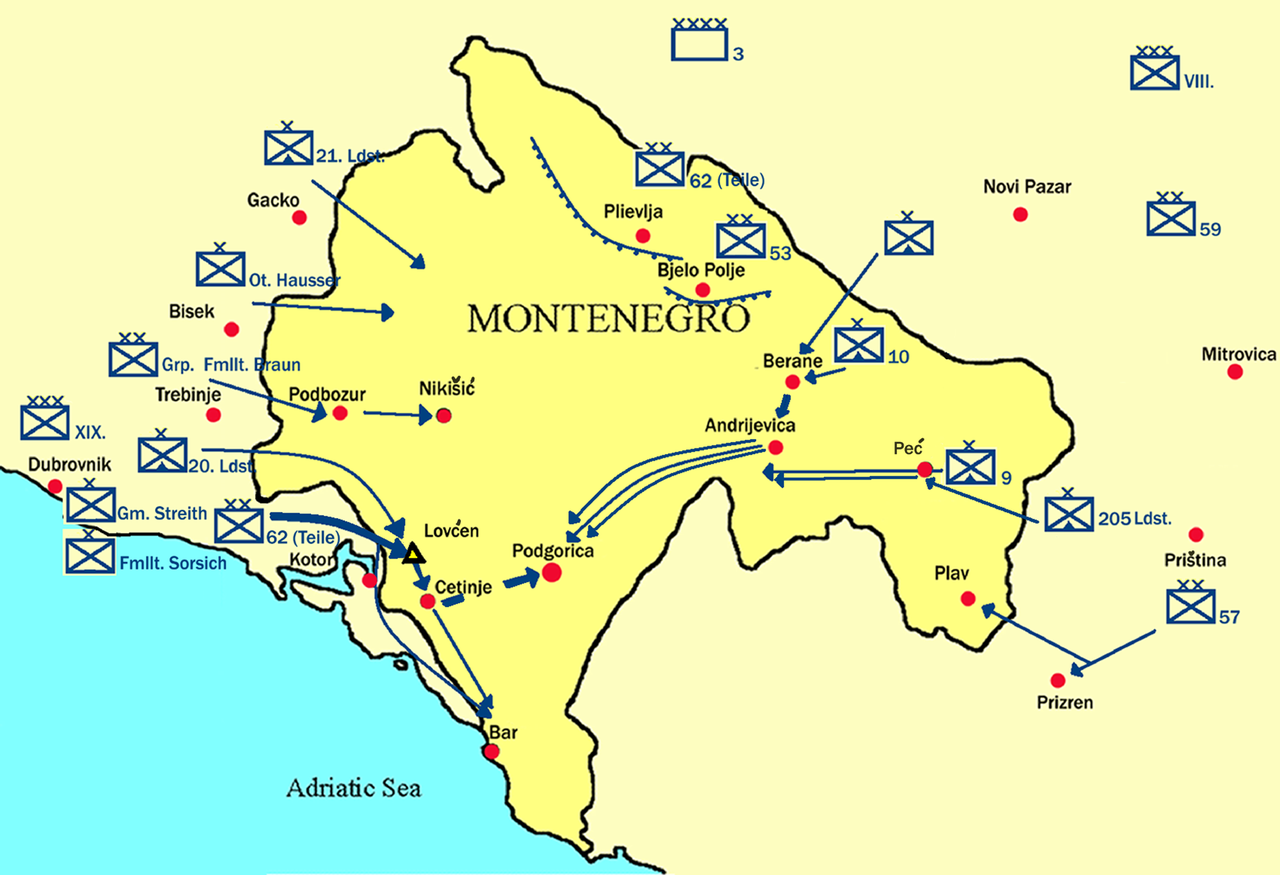 United Kingdom: First conscription bill is introduced in British parliament United Kingdom: First conscription bill is introduced in British parliamentWith the Great War edging into its third calendar year, British Prime Minister Herbert Asquith introduces the first military conscription bill in his country's history to the House of Commons on this day in 1916. Lord Horatio Herbert Kitchener, Britain's secretary of state for war, had warned from the beginning that the war would be decided by Britain's last 1 million men. All the regular divisions of the British army went into action in the summer of 1914 and the campaign for volunteers based around the slogan "Your King and Country Need You! Began in earnest in August of that year. New volunteers were rapidly enlisted and trained, many of them joining what were known as Pals battalions, or regiments of men from the same town or from similar professional backgrounds. Though the volunteer response was undoubtedly impressive — almost 500,000 men enlisted in the first six weeks of the war alone — some doubted the quality of these so-called Kitchener armies. British General Henry Wilson, a career military man, wrote in his diary of his country's "ridiculous and preposterous army" and compared it unfavorably to that of Germany, which, with the help of conscription, had been steadily building and improving its armed forces for the past 40 years. By the end of 1915, as the war proved to be far longer and bloodier than expected and the army shrank — Britain had lost 60,000 officers by late summer — it had become clear to Kitchener that military conscription would be necessary to win the war. Asquith, though he feared conscription would be a politically unattractive proposition, finally submitted. On January 5, 1916, he introduced the first conscription bill to Parliament. It was passed into law as the Military Service Act later that month and went into effect on February 10. Britain had entered the war believing that its primary role would be to provide industrial and economic support to its allies, but by war's end the country had enlisted 49 percent of its men between the ages of 15 and 49 for military service, a clear testament to the immense human sacrifice the conflict demanded. Poster: 1916 poster publicising the Act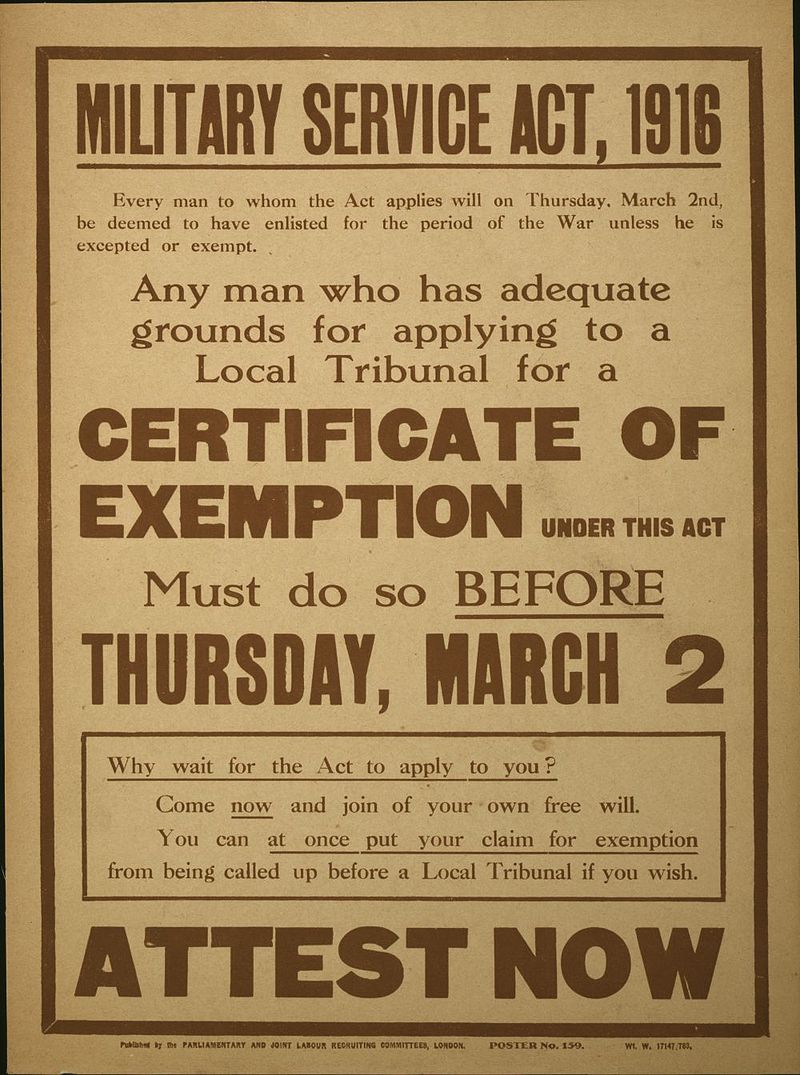 Naval operations: North Sea Naval operations: North SeaNorwegian freighter SS FRIDTJOF NANSEN, 3,275 tons, carrying a load of superphosphate from Bône to Rotterdam, runs on a mine laid by Alfred Nitzsche and UC-10. Naval operations: German East AfricaHMS MERSEY reports that two native spies have arrived and are to be dropped near the German-held coastline.
|
|
lordroel
Administrator
Posts: 68,061 
Likes: 49,462
|
Post by lordroel on Jan 6, 2021 3:49:00 GMT
Day 526 of the Great War, January 6th 1916Serbian campaign: Battle of MojkovacAn Austro-Hungarian force of 20,000 men attacked dug-in Montenegrin positions near Mojkovac, Montenegro. Despite out being vastly outnumbered, the Montenegrin Army of 6,000 repulsed the attack and inflicted 2,000 casualties. Map: Map of Battle of Mojkovac 6-7 January 1916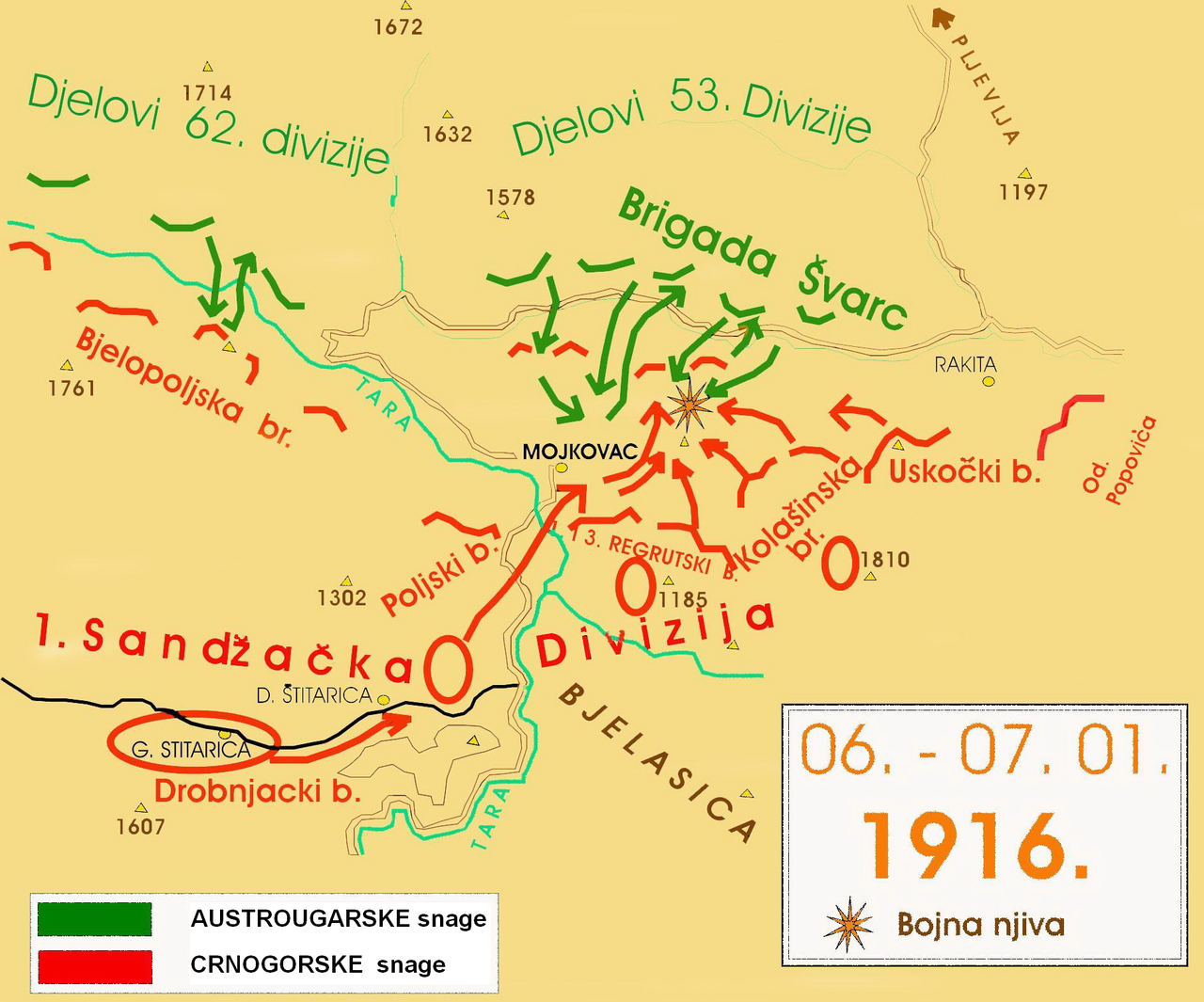 Mesopotamia campaign: help is on its way to the British in Kut Mesopotamia campaign: help is on its way to the British in KutBritain’s advance on Baghdad has come unstuck. The Turks have counterattacked and now have a British force besieged in Kut-al-Amara. An attempt by the Turks to storm Kut has been repulsed. Within Kut however the situation is grave. Losses from enemy action and from sickness mean that the army is wasting away. General Townshend is the commander of the Kut garrison; he calculates that it will have dropped from around 7,200 effectives at the start of 1916 to just 5,400 by the middle of January. Kut needs to be relieved while there are still men there to rescue. Help is on its way. General Nixon is the overall British commander in Mesopotamia. He has sent a a force forward to fight through the Turks and raise the siege. The desperate situation of the Kut garrison means the relief force is moving forward before it is at reach full strength. Today at Sheikh Saad, 25 miles from Kut, the relief force under General Aylmer clashes with a Turkish force barring their advance. If the British expected that they would be able to sweep aside the Turks they now receive a rude awakening. In making frontal assaults across open country on prepared Turkish positions the British suffer heavy casualties. United States: Wilson Gives up on German Peace TermsAll Entente powers had rejected Germany’s late 1916 peace proposal, but American President Woodrow Wilson still clung to hope that, with his help, the Europeans could resolve their conflict. On January 4, the president who had campaigned that “he kept us out of the war” assured his countrymen that he intended to do just that: “There will be no war. It would be a crime against civilization for us to go in.” Two days later, however, he was stunned to learn from his ambassador in Berlin that the German peace terms were less generous than he thought. The Germans offered to withdraw from Belgium, but demanded “guarantees” that the Allies had already called clearly unacceptable. The Germans wanted to maintain garrisons at Liege and Namur, occupy all Belgian military forts, ports, and railways, and guard Belgium while disallowing a Belgian army. In short, Belgium would be absorbed into the German Empire. America’s ambassador replied to the German Chancellor that: “I do not see that you have left much for the Belgians, excepting that King Albert will have the right to reside in Brussels with an honor guard.” “We cannot allow Belgium to be an outpost of Great Britain,” the Chancellor replied. Photo: British field artillery in action supporting the Anglo-Indian attack on the Ottoman positions during the Battle of Sheikh Sa'ad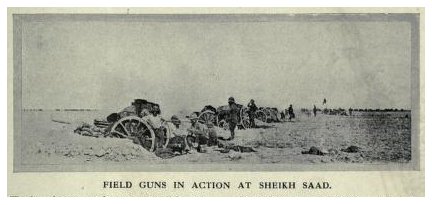 Naval operations: Scapa Flow, near Cape Wrath Naval operations: Scapa Flow, near Cape WrathThe commerce raiders and auxiliary cruisers that had been abroad or launched early in the war had been sunk or interned by the spring of 1915. The Germans did not give up their attempts, however, hoping that they could score a repeat of the sinking of the dreadnought Audacious in October 1914. On December 29, the SMS MOWE left Germany to serve as a minelayer and commerce raider in the Atlantic, disguised as a neutral merchant ship. On her way out of the North Sea, the MOWE laid roughly half of her 252 mines; the rest were laid off the French coast, where they would eventually sink two merchant ships. On January 6, the MOWE’S mines had their first success when the 1905 pre-dreadnought KING EDWARD VII struck one three and a half hours out of Scapa Flow, near Cape Wrath, while on her way to a refit in Belfast. Her captain attempted to beach her, but the engine rooms soon flooded, preventing this. Three or four hours later, a tow was attempted by nearby colliers, but this was called off due to poor weather conditions and the ship’s increasing list. The crew was evacuated over the next three hours; only one man, who fell into the sea during the evacuation, died. Around five hours later, the battleship capsized and sank. Photo: the sinking of KING EDWARD VII Naval operations: Texel Island Naval operations: Texel IslandWhilst patrolling north of Texel Island, HMS E17 struck an uncharted sandbank. Badly damaged the submarine was forced to surface. The Royal Netherlands Navy Cruiser NOORD BRABANT approached the stricken submarine to investigate. E17 believing the Cruiser was belligerent submerged, but owing to the damage was forced to surface again. E1 signalled the un-identified cruisers for assistance and her crew were taken off and interned. E17 finally sank at 1140 on Thursday 6th January 1916. Naval operations: German East Africa0620 Monitor HMS MERSEY drops two native spies ashore.
|
|
lordroel
Administrator
Posts: 68,061 
Likes: 49,462
|
Post by lordroel on Jan 7, 2021 3:50:35 GMT
Day 527 of the Great War, January 7th 1916YouTube (Prelude to Verdun And The Road To the Somme)Eastern FrontThe Russians assault Chartoysk in a blizzard, losing heavily. Gallipoli campaignThe final evacuation of Gallipoli from Seddul-Bahr begins this evening. At Cape Helles the defenses are manned from left to right by: 13th Division; 29th Division; 52nd Division; and in the old French sector, the Royal Naval Division. At this moment the Turks launch their last attack of the campaign. This comes under the cover of the heaviest bombardment of the campaign, directed primarily upon the British left flank. The attack fails almost before it begins, as it is met by steady British fire, and many Turks simply refuse to advance, as if, after months of heroism, their will has finally given out. This last Turkish attack costs the British one hundred sixty-four casualties, almost all among the North Staffordshire Regiment of 29th Brigade (13th Division), whose trenches are heavily shelled. Photo: W Beach, Helles, on 7 January 1916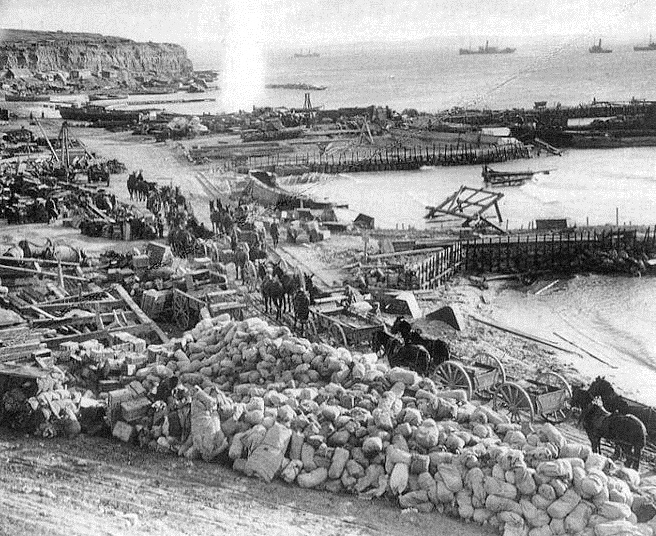 Ottoman troops under Liman von Sanders launch an attack against British troops at Gallipoli, but suffer heavy casualties. Mesopotamia campaign: Battle of Sheikh Sa'adThe first attempt to relieve the besieged British Indian force at Kut ran into problems at Sheikh Saad today. The British, although they realized they did not have a numerical advantage over the Turks, discounted the quality of the Turkish troops (despite their defeat at Ctesiphon) and pushed ahead anyway. Photo: 'Monitor bombarding Sheik Saad from Hibsh with 4" gun', 6 January 1916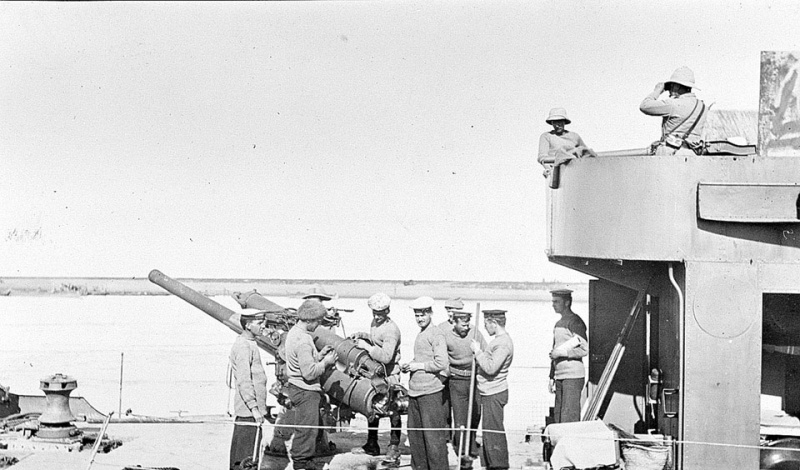 The British advanced on both sides of the Tigris, hoping to use the advance on one side to infiltrate the other. However, the British were tired after a 25-mile march on the 6th and had to advance on a perfectly flat (and, uncharacteristically for January, muddy) plain against the Turkish lines, rendering them extremely vulnerable, especially without adequate artillery support. One officer recalled: No time was given for the issue of orders, no frontage or direction was given, no signal communications arranged, and to all inquiries the one answer was ‘Advance where the bullets are thickest.’…The staff did not think that the Turks would put up a serious fight here and therefore only expected some 300 casualties. No definite plan seems to have been made and we simply marched up and made a frontal attack expecting them to retire.On the 7th, the British took the Turkish trenches after a series of determined charges, but only at the cost of over 4,000 men. The Turks then withdrew, but the British were too exhausted to pursue and were, regardless, mired in mud, as “the wounded are dying of exposure and some even of hunger.” Photo: Hospital Ship NO. 1, one of the few available, on the Tigris River in 1916 carrying British and Indian wounded back to the British clearing hospital at Falahiyah during the relief force's attempt to rescue the Kut garrison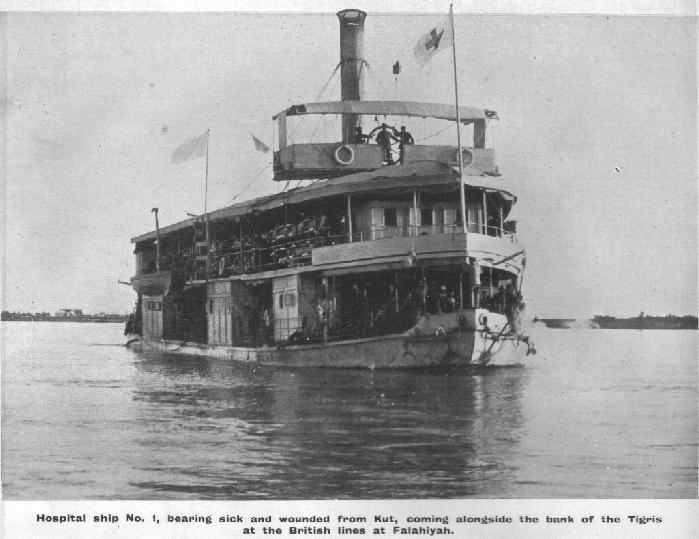 Naval operations: North Sea Naval operations: North SeaNorwegian freighter SS Bonheur, 1,158 tons, bound from Frederikstad to Garston with a load of boards, hits a mine laid by SMS Möwe. This is Möwe's second victim.
|
|
lordroel
Administrator
Posts: 68,061 
Likes: 49,462
|
Post by lordroel on Jan 8, 2021 8:22:08 GMT
Day 528 of the Great War, January 8th 1916Eastern FrontSevere fighting in Galicia. Serbian campaign: Montenegrin campaignAustro-Hungarian troops launch their final offensive against Montenegro with a 500-gun barrage and over 50,000 troops. Mesopotamia campaign: Battle of Sheikh Sa'adA British column under General Aylmer is attempting to raise the siege of Kut in Mesopotamia. At Sheikh Saad they have been blocked by a well prepared Turkish force. Initial attacks failed to break through the Turks but now at last the British have secured the position. The cost has been high: the British have suffered 4,000 casualties in just four days of fighting. Now Aylmer’s force is just 25 miles from Kut. It cannot be long before he is able to rescue Townshend’s force there. Aylmer radios ahead to report his victory at Sheikh Saad. News that the siege will soon be over causes great rejoicing among the Kut garrison. Photo: Montenegrin soldiers leave home and family to head to the front lines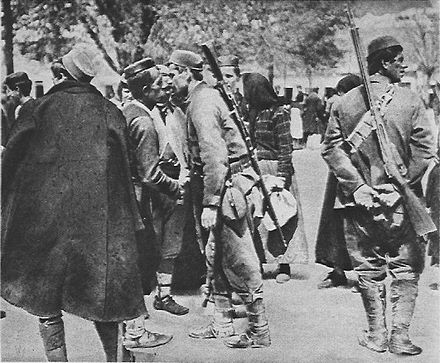 Aerial operations: A black day on Imbros Aerial operations: A black day on ImbrosThe RNAS continue to harass the Turkish positions as much as possible to assist the evacuation of the Gallipoli peninsula. The recent arrival of six Bristol Scouts fitted with Lewis guns has considerably improved the their equipment. Unfortunately this has been matched by the arrival of three Fokker monoplanes. Despite that, accidents continue to account for pilots, and today Flight Sub-Lieutenant Sidney Arthur Black of 3 Wing RNAS was killed in an accident whilst taking off from Imbros. Naval operations: Adriatic SeaItalian troopship CITTA DI PALERMO, 3,415 tons, and British drifters HMD FREUCHNY, 84 tons, and HMD MORNING STAR, 97 tons, all hit mines laid off Brindisi by Cäsar Bauer in UC-14. Bauer's score is now 5 ships and 7,231 tons.
|
|
lordroel
Administrator
Posts: 68,061 
Likes: 49,462
|
Post by lordroel on Jan 9, 2021 8:31:23 GMT
Day 529 of the Great War, January 9th 1916
Western Front
Slight German attack in Champagne.
German troops capture the peak near Harmannswillerkopf and capture 1000 French soldiers and 15 machine guns.
Eastern Front
Further Russian offensive in Bukovina.
Serbian campaign: Montenegrin campaign
With Serbia defeated and their army exiled to Albania, the Austrians now turned their attention to Serbia’s ally, Montenegro. The Austrians had brought reinforcements from the Italian front, and a force of 50,000 men now surrounded Montenegro on three sides. Montenegro decided to make its main stand at Mount Lovcen, a 5700-foot peak overlooking the Austrian port of Cattaro [Kotor], from which Montenegrin and French artillery had harassed the Austrian navy earlier in the war.
At dawn on January 8, the Austrians opened a massive, 500-gun artillery barrage on Mt. Lovcen. This included fire from Austrian battleships in Cattaro Bay, specially elevated for this purpose. Within two days, Mt. Lovcen had fallen and the way to the capital was open. Further north, the Montenegrins had slightly more success, but could at best hope to postpone the conquest of their country by a matter of days.
Gallipoli campaign: Allies Evacuate Gallipoli
Anzac and Suvla had been successfully evacuated before Christmas with great success, and since December 28 similar preparations had occurred at Cape Helles, aiming for a final evacuation on the night of January 8/9. The Turks either remained unaware of the impending evacuation, or were unwilling to take advantage of the situation. An attack was launched on the 7th, but it was heavily repulsed in some places while in others “most only showed their bayonets over the parapet & fired in the air and did no more,” as Turkish soldiers were understandably not willing to throw their lives away in the last days of the campaign.
By January 8, only 17,000 Allied soldiers remained on Cape Helles. Much of the last day was spent destroying stores which could not be evacuated, to prevent them from falling into enemy hands after the evacuation. The most disturbing for the men was the resulting slaughter of animals. Capt. Wilfred Collings recalled:
There were about 15 horses and a few mules, and the three of us reluctantly decided that we must make a start. It was heartbreaking. The horses were so completely trusting. The first three or four we took a short way up the ravine and shot them – a vet had been around earlier in the day and told us how to do it; draw an imaginary line from each eye to the opposite ear, and shoot them where they crossed. After the first few the remainder seemed to sense what was happening and panicked. They were firmly tethered together so couldn’t get away, but they were plunging and rearing and squealing. The Corporal said that he had been injured and couldn’t carry on (I don’t think he was) and disappeared to the first aid post and I never saw him again. The other man and I carried on and eventually the job was done. I hope we made a fairly clean job of it, but several had to have a second shot to make certain.
Such disobedience of orders when it came to this task was not uncommon; another man recalled “I knew that the Turks wouldn’t hurt a donkey so I left him there with plenty of hay so I knew he’d be alright…I didn’t see why he should be shot.”
The evacuation took place that night in three waves, one leaving at around 8PM, the other around 11PM, and the last (half as small as the others) between 2 and 3 AM. The men formed small detachments of 100 each to make their way down the peninsula, as stealthily as possible. Ordinary Seaman Joe Murray recalled:
All the gear that we had that jingled – water bottles, entrenching tools, even your bayonet scabbard – was taken away because it made a noise. We still had our sandbags on our feet…
The vast majority of men evacuated from V and W beaches, where some of the first landings had taken place in April. Joe Murray left the mainland and boarded his small evacuation lighter around midnight via the wreck of the River Clyde, where so many had been killed on the first day of the landings. Murray recalled of this voyage:
We were so packed we couldn’t move our hands up at all. We couldn’t! I remember the chap in front of me was sick as a dog. Half of them were asleep and leaning. We were packed up like sardines in this blinking lighter. It was dark, of course. Apart from being dark, it was dark inside – no lights, no portholes….We left there like a lot of cattle, being dumped into a lighter and just pushed to sea, and nobody gave a tinker’s cuss whether we lived or died.
The last men left the front lines around midnight. By this time, however, the wind had picked up, making attempts to depart from Gully Beach (on the Aegean side) impossible, forcing some to rush down to W Beach at the last moment. Some of the last to leave, around 4 AM, included General Maude, commanding the 13th Division. His subordinate, Brig. Gen. James O’Dowda, recalled:
…General Maude discovered that his bedding roll had been left behind. He said that he was hanged if he was going to leave his bedding for the Turks, got two volunteers with a stretcher and went back for it….The time was now 3.50am and there was no side of the missing General. I therefore sent an Officer and a couple of men, who knew every inch of the beach, and gave them ten minutes to retrieve him. Fortunately they found him almost at once.
The last lighter got away just in time, at at 4AM the remaining stores were detonated by a timed fuse. O’Dowda continued:
We had not gone 200 yards from the jetty when the expected terrific explosion nearly blew us out of the water. Thousands of tons of debris, rock, shellcases, bits of limber wheels, and other oddments hurtled over our heads. I could never understand how we escaped injury….At the same time the beach was lighted up as if for a Carnival…it truly was a magnificent sight.
The evacuation had been a great success, with probably fewer than ten casualties throughout the whole process. The explosion alerted the Turks, who began bombarding the beaches, but it was too late. After dawn, the Turkish infantry began to proceed down Cape Helles, losing a number to mines and booby traps. Despite the British best efforts, however, the survivors were able to find plenty of intact supplies. Ibrahim Arikan found one tent “like a marketplace, full of tiles, zinc, plates, bicycles, motorcycles, forks, spoons and so on… saw food and clothing supplies piled high as apartment buildings.”
At 8.45 AM, Liman von Sanders wrote Enver Pasha, telling him “God be thanked, the entire Gallipoli Peninsula has been cleansed of the enemy.”
|
|























